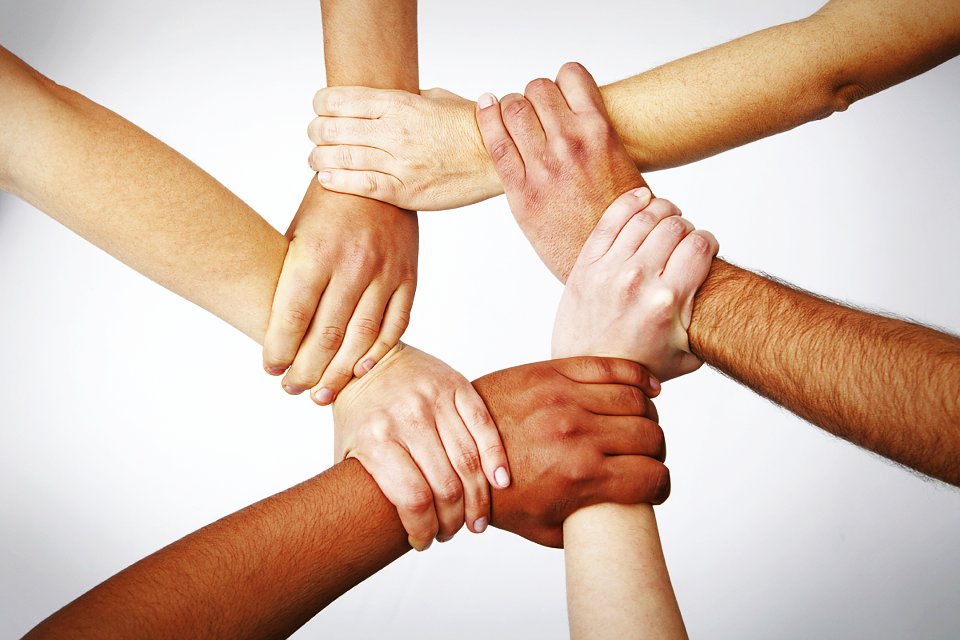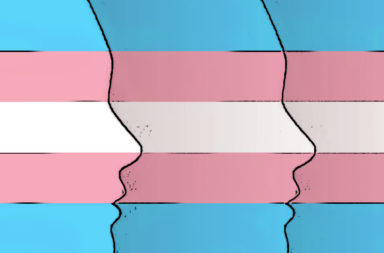Many weeks back I had a very thought-provoking discussion with Su Jeffrey’s from the Royal Navy and as we talked about the career challenges holding back women and minorities. Sue shared something very interesting- male nurses in the forces face similar challenges to that of women in male dominated industries. These men face what is commonly known as a ‘stereotype threat’ wherein they are judged for presumably lacking women specific strengths and qualities such as compassion and empathy. Sounds familiar? A year ago, I interviewed Jenny Garrett for my podcast and while discussing her book Rocking Your Role which centres around female bread earners, Jenny revealed the challenges that stay at home dads face regularly.
Sue also shared how being left handed has created many difficulties in her life. And it was not until she was able to communicate these challenges through various activities to her colleagues that they began to relate to her issues and understand them better. When we talk about diversity and inclusion we often talk about the more obvious minorities. But what about these unseen ones? Being left handed is not a disability but lefthanders face many uncomfortable disadvantages which many of us may not be aware of.
What I learned from this conversation? Do not automatically stereotype people and their challenges even if they seemingly belong to the ‘privileged’ groups. Sometimes these so called privileged people may also have challenges that you are completely unaware of.
I don’t have a formal degree in diversity studies, I only speak based on my own experience of coaching, training and interacting with people belonging to diverse backgrounds across the globe. And I am also huge fan of research and surveys to substantiate what I say. But I do believe that the model explained below comprises of three important prerequisites for making another person feel included. This model will also help in understanding people going through personal or professional issues at work place.
ECG| Empathy, Communication, Genuine Effort
Empathy
As described by Wikipedia; Empathy is the capacity to understand or feel what another person is experiencing from within their frame of reference, that is, the capacity to place oneself in another’s position. And this understanding is free from personal biases and judgement. As human beings, we all have a natural tendency to judge and it’s quite difficult to communicate without reflecting a personal bias but with practice, this is achievable.
In Neuro-Linguistic Programming we develop that understanding by firstly, appreciating the fact that each has individual has his/her own unique map of the world and that each individuals not only responds to it differently but also acts or behaves in the way he/ she thinks is best at a given time. Our responses and actions are molded by our own perceptions and personal experiences. What one party deems appropriate might seem unreasonable to others. And that’s because their judgments are informed by their own personal views versus ours. This powerful concept explains why some people act/react so differently from each other in similar situations. Do you often feel frustrated with people for what they do and do not do? Well that’s because, simply put, they are not you! Their perceptions, perspectives and model of the world inform how they act and react, and their map is different from yours. What’s more, their social conditioning and upbringing may be dramatically different from yours too. It is natural to be affected by the choices people you are surrounded with make. However, when you start acknowledging ‘the difference in maps’ across various individuals in your life, you can better understand why they react the way they do.
Another NLP presupposition which is helpful in understanding people and their choices is that every behavior has a possible positive intention or impact and that people always choose what seems to be the best choice to them, although their choices may be based on faulty data. Remember, empathy is not about agreeing with or approving people and their choices. It’s simply walking in their shoes so you can relate to them better. And according to NLP, although you can’t control the world, you can control your actions and the only way you can change others is by changing yourself.
I am not suggesting that NLP will help you transcend to an extraordinary, ethereal level of total positivity, but with this new understanding, you may already be looking at different situations and people with a more empathetic light in your eyes!
When dealing with a person who is different from you in away, some good questions to ask yourself include:
- Are there are any triggers or precipitating factors clouding my judgement? If you are already frustrated about one thing or have had a bad experience with a certain type of person or the group he/ she represents, a trigger that goes off could bring you to anger much faster than usual. Are you ever distracted by precipitating factors? Do you sometimes drive to a place and not know how you got there?
- Are you experiencing any of the following negative limiting beliefs; Emotional Reasoning: You assume your negative emotions and that of the majority are proof of the way things really are; Personalization & Blame: You hold someone personally responsible for an event that isn’t entirely under his/her control; Discounting the positive: Downplaying positive experiences by telling yourself they don’t count.; Mental filter: You pick out a single negative detail and dwell on it; Magnification: Exaggerating a personal flaw, a small negative experience, or the abilities of someone else; Labelling: Tendency to resort to simplistic and negative labels to define behaviour. Here is how you can question limiting beliefs if you have any.
- What if it was me? What if I was going through the same problem? What would I do? What would I need from people around me?
Communication:
I am a strong advocate of communicating to create awareness and clear misconceptions. You may need to find ways to help team members from being isolated. Identify common bonds with co-workers. When there are minorities in a meeting or boardroom, they are often viewed as outsiders. To overcome this barrier, it is critical to seek out ways to bridge the gap and identify shared interests. Play your part in making the team understand that the minorities they are working with might not fit the stereotypes that society defines for most people of that group.
Encourage getting to know team members as people. Ask them about their families and hobbies. Deep down we are all human beings and have similar drives. The people sitting across the table from you are human. They have their own fears, dreams and experiences. In this age of radical transparency, open communication is critical to removing these barriers and better understanding your colleagues. When you truly understand your colleagues, you can develop authentic relationships with them. Sometimes all it takes is communication and awareness.
I believe that many communication issues including micro aggressions arise owing to lack of awareness and exposure. No matter how well intentioned, not everyone is aware of cultural nuances, thus risk coming across as ignorant or condescending. Many people hence end up saying things unintentionally and unless it is pointed out to them what exactly ‘inappropriate communication’ looks like, they will never really know.One of my book survey respondents revealed how her new boss did not invite her to dinners.
Instead of sulking, Alicia chose to confront the issue by carefully working this into a conversation with her new boss. Alicia believes that it’s all about creating awareness and communicating concerns in a subtle not awkward way. She recalls the time when she wasn’t offered a role because her boss wrongly assumed the more demanding nature of the role might not suit her as ‘a woman’. Alicia later addressed this issue when she answered a diversity study question about what it was really like to be a woman. She explained to her boss how important it is for colleagues to treat women working in the office as team members and professionals first, and women second. She made her boss realize that women must contend with incorrect assumptions and inappropriate questions on a regular basis. That valuable exchange was eye-opening for her boss. Effective communication can change future behavior in positive ways. When her boss had an open position and a qualified pregnant employee, he asked her if she wanted the role instead of assuming that she wouldn’t.
Genuine Effort
Whatever effort you exert in making other people feel included should be genuine, authentic and sincere. But notice I said ‘genuine’ effort and not necessarily a successful effort. Someone asked me in a presentation last week- ‘What if I have tried everything but the other person still doesn’t mingle?’ I suggested linking the desired outcome to appraisal and rewards; intrinsic or extrinsic, which can help motivate the person towards desired action. I also suggested giving time to that person to open up but most importantly I said; understand that not everyone will open up to and overcome their reservations despite your best effort and intentions! Sometimes, difference in preferences leads people to exclude you. And this applicable either way; when you are in a minority yourself or when you are dealing/ managing minorities. People’s behavior often changes when they are OR are not with other people like them and hence their conversion and behavior may not always sound inclusive. The truth is that some people tend to work with tunnel vision, only seeing what’s directly in front of them versus what’s beyond their narrow perspective.
In that case, you can also ask yourself if there is anything you can do or should have done to improve the situation for this person. Think of ways you can help. Have you exhausted all efforts or are there still a few things left you can try? Perhaps, consider involving a third person to improve the relationship? If you have sincerely answered yes and as long as you have tried everything you can but are still unable to help, then let it be. And who knows even if you are unable to help, the other person eventually breaks the ice knowing/acknowledging that you have genuinely tried to make things better for him/ her! Either way, don’t let this be a cause of bitterness or vindictiveness-move on and come back to this later.
The aforementioned steps/ components is what I have come up with based on my own experience and research. Read and ask yourself- Am I passing this ‘ECG test’ to make people feel included? Am I empathizing? Am I communicating? Am I making genuine efforts? Am I making use of any or all of these three components to better understand someone’s professional or personal challenges?
As I wrote in my book-Her Way to the Top, It’s not much fun being the only ‘type’ in the room, whether it’s owing to your gender, faith, background, orientation, preferences or even your physique. The experience can be alienating and takes a toll on your self-esteem and performance. You may also have to deal with discrimination or the pressure of tokenism. Lets’ all try and empathize more, communicate more and make more genuine efforts to make our colleagues/ friends/ family members feel more included!
Is there anything else you would like to add to this? I invite you to join the conversation and add your comments and feedback…






